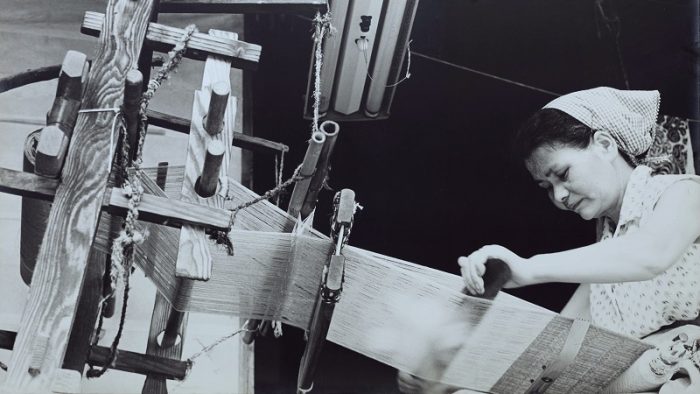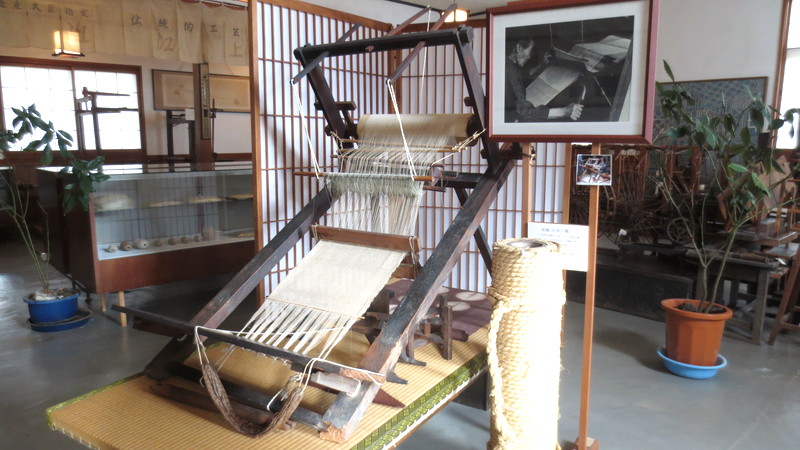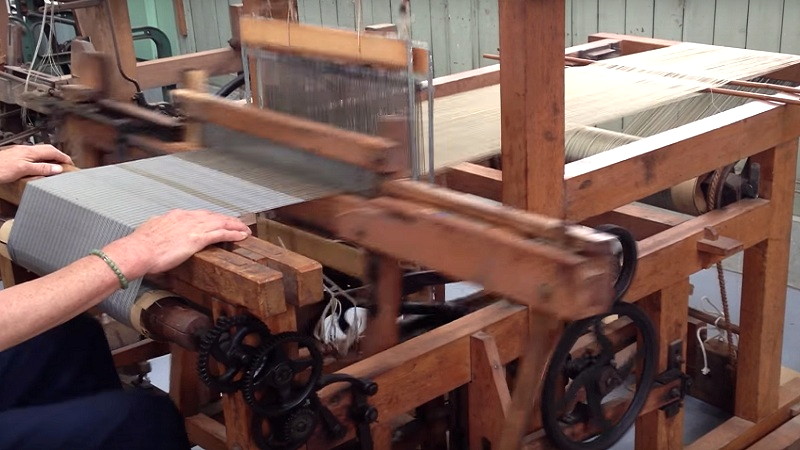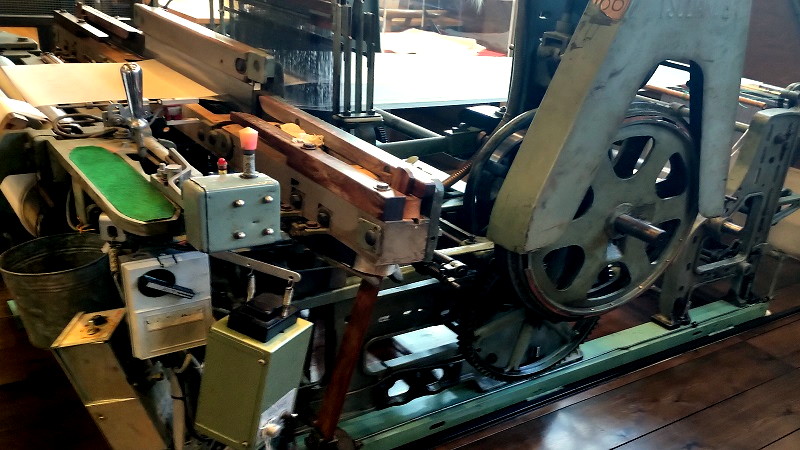The Hirota Tsumugi Blog
- 2020.10.06
- “Hand weaving”? Japanese Hand looms and Power looms used in Kimono Fabric Weavers

There are a tons of “hand woven” labeled fabrics in the Kimono market. But we better figure out which type of loom is used for “hand weaving” the fabric, because it may not matchwith your imaginal hand weaving.
Let’s look at various looms used in Japanese kimono fabric makers along with the development of looms in Japan.
Takabata (floor loom)
The most well-used handloom in Japan is a type of floor loom called Takabata “高機”.
Takabata floor loom has started to be used widely from the late Edo period (late 19th century). The structure is very simple as well as robust, so that many of Takabata being used now are more than 100 years old. The basic structure is same with ordinary floor loom used in many other countries.

Takabata, weaving Kihachi-jo silk.
Jibata (back-strap loom)
Before Takabata appeared, a back-strap loom, called Jibata “地機” had been used from ancient time of Japan. The warp yarns are directly strapped on weaver’s back, so that the tension of the warp yarns can be adjustable. It is more like “body-weaving”, not just hand weaving, because weaver’s body is a crucial part of loom’s mechanism, moving whole body in order to weave. Jibata requires more time to lean and technical proficiency. Takabata is far more easy to weave.
Today, Jibata is used in very limited traditional weaving areas, such as Yuki tsumugi and Echigo-jofu.

Jibata, that was used for Omi-jofu weaving. The shapes and structures of Jibata have geographical characteristics.
Takabata could increase production efficiency by three times as much as Jibata, thanks to which the warp yarns are fixed on Takabata. On Takabata, weaver just need to rhythmically pass a shuttle right and left. Takabata is also able to equip multi heddles for weaving various complicated twill or float weaving patterns have been produced rapidly since the Meji era (beginning of 20th century ~).
Batten (flying shuttle)
While Takabata could increase the efficiency, Batten loom (a type of flying shuttle) could increase the efficiency of throwing shuttle and the passage of the weft yarns. Just pulling down the string can move the shuttle right and left, which dramatically increase the efficiency and also make it possible to weave wider width because it does not need to use weaver’s hands to throw a shuttle.

Batten, used by Morihiro Kikuchi. The weaver can only concentrate on the operation of reed and treadle.
Foot loom
While Batten is a more efficient type of Takabata, the emergence of foot loom could increase more efficiency, which atomizes the pushing operation of reed.
Foot loom achieved at atomizing 3 operations at one time of stepping on treadle;
1. moving sheds to open up upper and lower warps
2. in the meanwhile, throwing shuttle for passing the weft yarns, and
3. pushing reed to weft yarns into place.
Foot loom just needs weavers’ foots stepping operation and hands are free.

Foot loom, weaving weft yarns at an amazing speed.
Power loom
Finally, power loom could achieved the full atomization at all the humane operations.

Power loom, all of the structure consist of metallic material, not by woods.

Another type of power loom, there is a lever to switch on.
Power loom is run by electric power, and weaving speed is very fast. If it is the case of full-automatic type of power loom that run all the time when the switch is on, the operator can take care of the multiple looms at once. The rotation speed of the crank shaft adjust the weaving speed, and for example, 200 rotation per minute can beat up 200 weft yarns per minute, which means that 5 hours is enough for finishing a bolt (12.5m)

Air jet loom, entirely different production scale, compared with kimono fabric weaving.
Jibata takes more than a month for weaving a bolt, but a power loom is able to produce many bolts in a day. This was the history of the productive efficiency in order to produce cheaper fabric as long as possible. Today, rapier loom or air jet loom that do not need shuttle are emerged, which are able to weave optional patterns at an extremely high speed.
We have seen the development of Japanese weaving loom; Jibata→Takabata→Batten→Foot loom→Power loom. It appeared that our imaginational “hand-weaving” would be acceptable Batten but not foot loom.